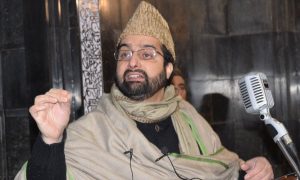Battle for the Valley: Mufti’s Pivotal Fight in Anantnag-Rajouri’s Political Arena
The Anantnag-Rajouri seat in Jammu and Kashmir becomes a battleground for a three-way contest, with high stakes for Mehbooba Mufti as the former PDP bastion faces a redrawn electoral boundary.
As the Srinagar and Baramulla constituencies make history with their voter turnout in the 2024 Lok Sabha Elections, the focus now shifts to the Anantnag-Rajouri parliamentary constituency of Jammu and Kashmir, a seat steeped in political significance and intrigue.
The Anantnag-Rajouri seat, which will be voted on in the sixth and penultimate phase of the Lok Sabha elections on May 25, has gained even more significance in shaping the region’s political landscape after its electoral boundaries were redrawn in 2022.
High-stakes battle for Mehbooba Mufti
The Anantnag-Rajouri seat is currently a battleground for a three-way contest in the first election after the abrogation of Article 370 and redrawing of its political map.
The People’s Democratic Party (PDP) chief, Mehbooba Mufti, is contesting against Mian Altaf of the National Conference (NC), and Zafar Iqbal Manhas of the Apni Party, making the outcome of this election highly unpredictable.
For former J&K chief minister Mehbooba Mufti, it is a high-stakes battle. Why? Because the Anantnag seat used to be a PDP bastion before delimitation in 2022. Mufti, 65, won the seat in 2004 and 2014 before the scrapping of Article 370. Her father and former Union Home Minister, the Late Mufti Mohammad Sayeed, won the seat in 1998.
The NC won the seat in 2019 (Hasnain Masoodi) and 2009 (Mehboob Beg).
Also, the PDP was expecting support from NC, its INDIA bloc partner. But that didn’t happen. The Farooq Abdullah-led NC, instead, fielded its candidate against Mufti. The two parties have supported the Congress candidates in two seats in the Jammu region.
The altered demography
Until 2022, the constituency in South Kashmir – known earlier as Anantnag – comprised only the districts of the Valley. However, a redrawn Anantnag-Rajouri seat was carved out by combining the Anantnag region in the Valley and Rajouri and Poonch of the Jammu region, changing the seat’s demography through delimitation.
The new seat has 18 assembly segments — 11 in the Kashmir region’s Shopian, Kulgam, and Anantnag districts and 7 in Jammu’s Poonch and Rajouri districts across the Pir Panjal range.
The area of the seat in Kashmir Valley is dominated by non-Scheduled Tribe (ST) Muslims, who are of Kashmiri ethnicity. The area in the Jammu region is dominated by the Gujjar and Bakerwal Muslim communities — categorised as ST and not of Kashmiri ethnicity. The Jammu region also has a significant population of the Pahari ethnic group, which consists of non-Gujjar Muslims, Hindus, and Sikhs.
Altaf’s family has won nine assembly elections since 1967 and is closely associated with some influential tribal families in Rajouri, the region included in the seat after delimitation.
The BJP inroads
After altering the demography, the formation of the Anantnag-Rajouri constituency didn’t go well with the regional parties—the NC and the PDP. The two parties have represented the seat in the parliament between themselves since 2004. The concern was that the step, particularly including areas from Jammu, was to help the Bhartiya Janata Party (BJP) make political inroads in the Valley.
BJP fighting through ‘proxies’
The steps notwithstanding, the BJP, like in the case of Srinagar and Baramulla seats, has not fielded any candidate in the Anantnag-Rajouri constituency. Top party leaders, includingHome Minister Amit Shah, have said the BJP was not in a rush for ‘lotus to boom’ in the Valley.
However, Tarun Chugh, the BJP’s J&K in-charge, who recently visited Rajouri-Poonch, emphasized that the BJP backs any party except NC, PDP, and Congress.
NC and PDP have called parties like the Apni party ‘proxies’ of the BJP. “The BJP is using such parties whose people got the money via Hawala for militancy. They can do anything to keep Mehbooba Mufti out (of Parliament),” Mufti told news agency ANI on May 22.
Unlock a world of Benefits! From insightful newsletters to real-time stock tracking, breaking news and a personalized newsfeed – it’s all here, just a click away! Source

